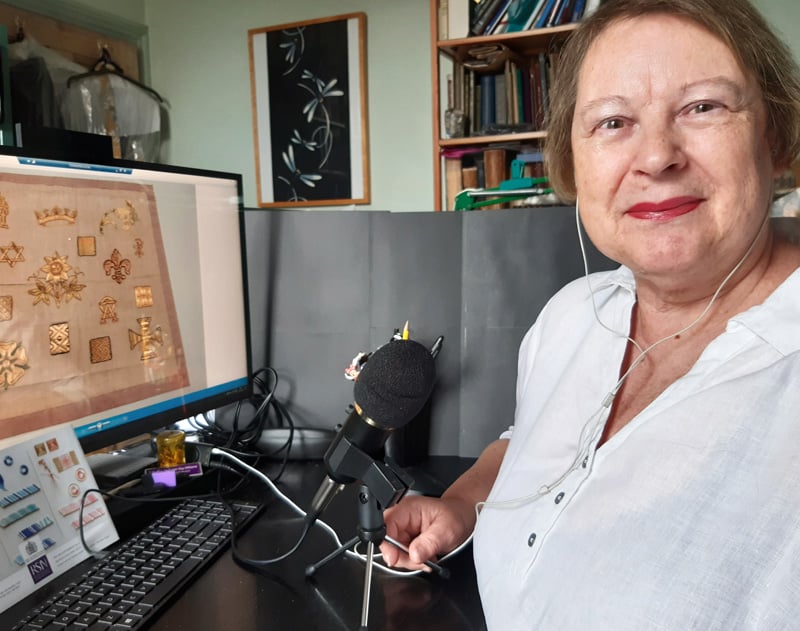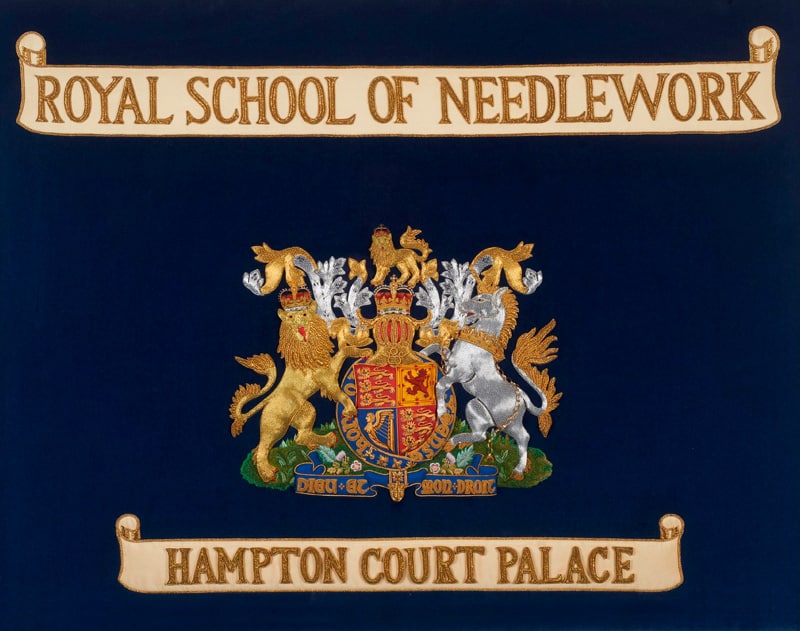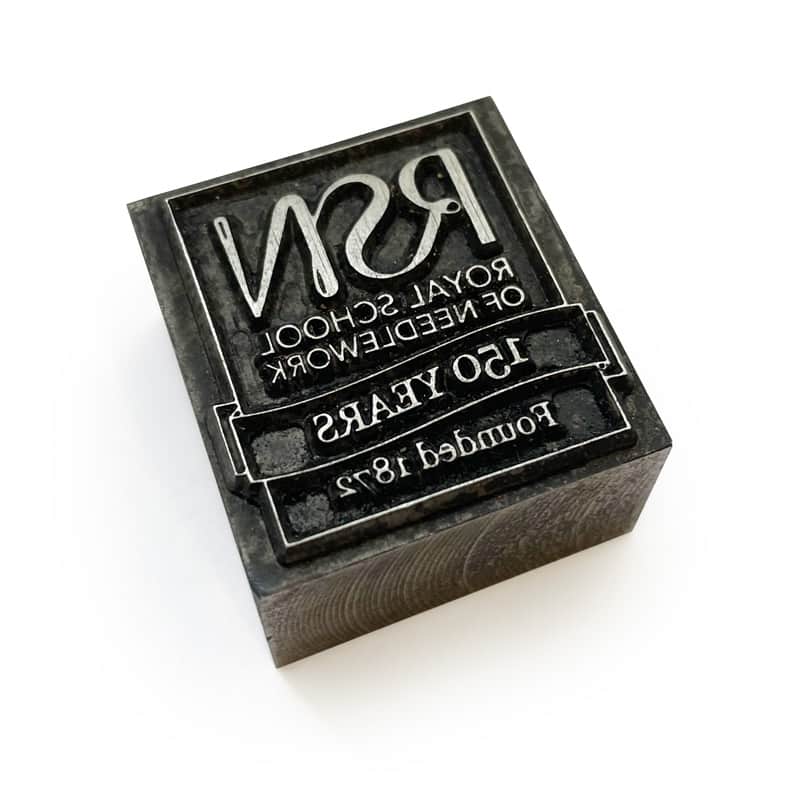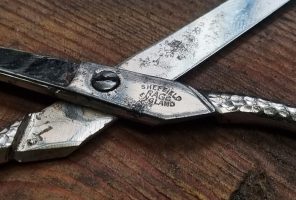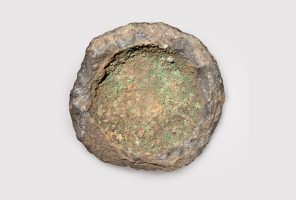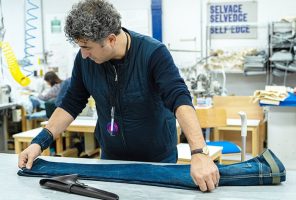The Royal school of needlework
The UK’s globally prominent embroidery institution, the Royal School of Needlework, celebrates its 150th anniversary in 2022. We spoke to the school’s Chief Executive, Dr Susan Kay-Williams, to learn about the RSN’s fascinating history, and how it will mark this year’s big milestone.
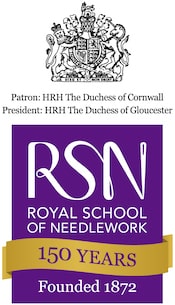
The RSN at 150: celebrating the past, and looking to the future
Susan and her RSN colleagues are celebrating the school’s 150th anniversary this year with a veritable feast of embroidery events.
The showpiece will be a 150th anniversary exhibition at the Fashion and Textile Museum in London (1 April – 4 Sept).
“It’s going to include some wonderful royal pieces, and we can hopefully tell the stories of these pieces and the links that they’ve got,” says Susan.
Also planned are a series of special events designed to encourage newcomers to start stitching, exhibitions at Ely Cathedral and local to the school, and an international summer school which will be held partly online, and partly at Hampton Court.
The school has even teamed up with Ernest Wright to sell limited editions of our Antique Stork and 4” Print Embroidery Scissors, as part of the RSN Anniversary Collection. Needless to say, this is a great honour for Ernest Wright.
But perhaps the most exciting of the RSN’s anniversary initiatives is the RSN World Stitch Bank, an ambitious project to record every existing stitch.
“This is a really important initiative, because it is our dream, our hope, to be able to conserve every stitch in the world,” says Susan.
“Now, we actually don’t know how many stitches there are, because we may find that what somebody calls this, somebody else calls that, and actually the stitch is the same. But we might also find that different populations have different stitches, and we hope ultimately to be able to add those to the Stitch Bank.”A good measure of the RSN’s progress towards its aims would be the stories of its alumni. Erica Wilson, who graduated from the school in the 1940s, wrote 17 books and produced and starred in two WGBH TV shows about embroidery, earning a reputation as America’s ‘First Lady of Stitchery” in the process. Jenny Adin-Christie, who studied with and worked for the RSN in the 1990s and 2000s, has become a leading expert in ‘whitework’, a set of techniques which were traditionally worked with white thread on white fabric. And the list goes on.
Something to enjoy doing when everything around you is falling to pieces
While embroidery has been in and out of popularity in recent decades, the last few years have seen the craft flourish like seldom before.
“As a positive aspect of the pandemic, people have been taking up embroidery again, as something soothing, as something almost meditative, that they can really enjoy doing when everything around them seems to be, you know, falling to pieces,” says Susan.
The RSN has seen an influx of new learners – not only students enrolling onto the degree and part-time classes taught at Hampton Court Palace, but also a growing cohort of online students, who join lessons virtually from as far afield as New Zealand and Chile.
Helping students through troubled times has been a part of the RSN’s remit since the very beginning. The school’s first students were three sisters whose father had passed away unexpectedly, leaving the young women and their mother financially unsupported.
“There was no welfare support as there is today, so they were on the verge of destitution,” says Susan.
“So, our founders really wanted to offer lessons and paid employment, for educated women who they would then enable to make their own way in life.”
The eldest daughter, Martha, stayed with the RSN as an embroiderer for nearly 20 years, earning money to support her family all the while.
“We still predominantly employ women, although we are open to men and women as embroiderers,” says Susan.
“I think for many, the RSN has been a fantastic source of employment.”
The RSN at 150: celebrating the past, and looking to the future
Susan and her RSN colleagues are celebrating the school’s 150th anniversary this year with a veritable feast of embroidery events. The showpiece will be a 150th anniversary exhibition at the Fashion and Textile Museum in London (1 April – 4 September).
“It’s going to include some wonderful royal pieces, and we can hopefully tell the stories of these pieces and the links that they’ve got,” says Susan.
Also planned are a series of special events designed to encourage newcomers to start stitching, exhibitions at Ely Cathedral and local to the school, and an international summer school which will be held partly online, and partly at Hampton Court.
The school has even teamed up with Ernest Wright to sell limited editions of our Antique Stork and 4” Print Embroidery Scissors, as part of the RSN Anniversary Collection. Needless to say, this is a great honour for Ernest Wright.
But perhaps the most exciting of the RSN’s anniversary initiatives is the RSN World Stitch Bank, an ambitious project to record every existing stitch.
“This is a really important initiative, because it is our dream, our hope, to be able to conserve every stitch in the world,” says Susan.
“Now, we actually don’t know how many stitches there are, because we may find that what somebody calls this, somebody else calls that, and actually the stitch is the same. But we might also find that different populations have different stitches, and we hope ultimately to be able to add those to the Stitch Bank.”
At the time of writing, the RSN has a small, dedicated team researching stitches and preparing their details for inclusion in the stitch bank, where they can be accessed by stitchers, curators, historians and others with an interest in embroidery.
The RSN World Stitch Bank is a legacy project of the RSN, which is set to go on for a number of years after the anniversary has passed. It is a living embodiment of the school’s founding mission: to preserve the art form of embroidery, in all its variety. To preserve any part of embroidery, is to preserve something special.
As Susan puts it, “There is just something about embroidery, particularly when it’s on the larger scale, because it’s just handwork, it’s not done by machine.
“You understand the time that takes, and the skill it takes for it to look as perfect as it does.”
Find out more about the RSN by subscribing to the school’s monthly eNews updates.
